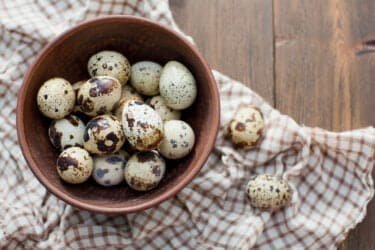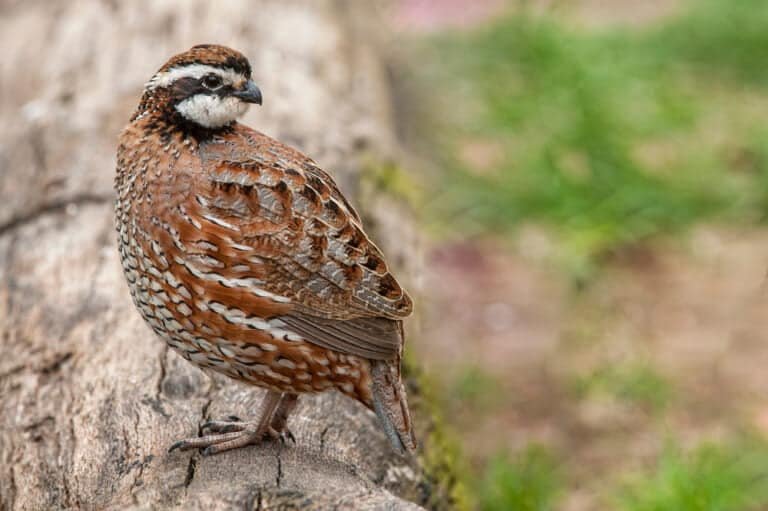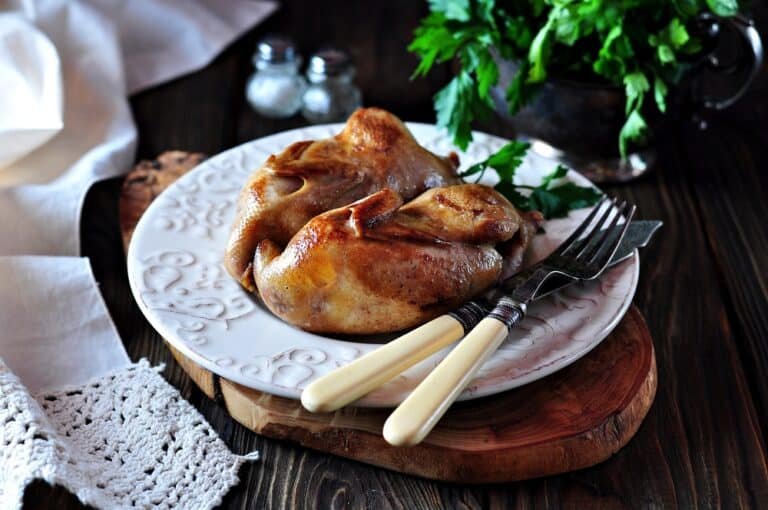Unlocking the Nutritional Marvels: The Best Guide to Quail Eggs
In culinary delights, few ingredients possess the charm and allure of quail eggs. With their petite size and delicate appearance, these tiny eggs have captured the attention of food enthusiasts worldwide.
Despite their diminutive stature, quail eggs pack a punch when it comes to flavor and versatility in the kitchen. Quail eggs have a long-standing history as a prized delicacy in numerous cultures.
From ancient civilizations to modern-day cuisines, these miniature wonders have held a special place on dining tables across continents. The unique characteristics of quail eggs contribute to their status as an esteemed ingredient that is often associated with elegance and sophistication.
As one delves into the captivating world of quail eggs, it becomes evident that they are not merely regarded as miniature counterparts to chicken eggs but hold great importance in various culinary traditions. Their distinct qualities make them ideal for various dishes, from exquisite appetizers to decadent desserts.
Quail Eggs: An Ancient Delicacy
Historical significance of quail eggs in ancient civilizations (Egypt, China, Greece)
Quail eggs have a rich history dating back to ancient civilizations, where they were revered as a delicacy. One such civilization that greatly valued quail eggs was ancient Egypt. The Egyptians considered the Quail a sacred bird associated with the goddess Isis, and its eggs were believed to possess special powers.
Quail eggs were often included as offerings in tombs to nourish the deceased in the afterlife. Moreover, they were also consumed by the pharaohs and nobles as a symbol of their elevated status.
Similarly, China has a long-standing tradition of incorporating quail eggs into its cuisine. The Chinese believed that consuming quail eggs would enhance their vitality and longevity.
These tiny marvels were highly valued for their perceived ability to improve blood circulation and boost overall health. They even became an essential ingredient in traditional Chinese medicine, used to treat various ailments due to their beneficial properties.
In ancient Greece, quail eggs held significant culinary importance. They were enjoyed by both aristocrats and commoners alike due to their unique taste and nutritional value.
Quails were symbolic in Greek mythology; they were associated with goddesses such as Artemis and Aphrodite, representing fertility and beauty. Quail egg consumption was believed to bestow these qualities upon those who consumed them regularly.
Symbolism and cultural beliefs associated with quail eggs
Throughout history, quail eggs have been symbolized across different cultures worldwide. In many societies, these miniature wonders are seen as potent fertility symbols due to the reproductive abilities of quail themselves. It is believed that consuming quail eggs can promote fertility and increase chances of conceiving.
Furthermore, some cultures associate superstitions and beliefs with quail eggs. In parts of Asia and Europe, hanging quail eggs from strings or wearing them as protective amulets to ward off evil spirits and bring good luck is common.
The mere presence of these eggs is believed to create a harmonious environment and protect against negative energy. In addition to their symbolic significance, quail eggs have also found their way into various cultural traditions and festivities.
For example, during Easter in some European countries, quail eggs are decorated and given as gifts, symbolizing new life and rebirth. These traditions highlight the enduring cultural importance of quail eggs as more than just a culinary delight.
Quail eggs are revered for their historical significance, symbolism, and associated cultural beliefs. Their journey through ancient civilizations demonstrates that they have always held a special place on the table for their exquisite taste and the deeper meanings they embody in different cultures worldwide.
Nutritional Value of Quail Eggs
Comparison of nutritional composition between quail eggs and chicken eggs
When comparing the nutritional composition of quail eggs and chicken eggs, it is important to note that both offer a wide range of essential nutrients. However, quail eggs have certain advantages over their chicken counterparts. Firstly, quail eggs are generally smaller than chicken eggs, meaning their nutritional content is more concentrated.
Despite their smaller size, quail eggs contain significantly more nutrients per gram than chicken eggs. One notable difference lies in the calorie content.
Quail eggs are lower in calories, with an average of around 14 calories per egg compared to approximately 70-80 calories in a medium-sized chicken egg. This makes them an excellent choice for individuals conscious about their caloric intake or following a weight management plan.
High protein content and essential vitamins/minerals found in quail eggs
Quail eggs are considered a fantastic source of high-quality protein. They contain even higher protein levels than chicken eggs on a gram-to-gram basis. Protein is essential for growth and repair within the body and is crucial in maintaining muscle mass and supporting various bodily functions.
Furthermore, quail eggs are rich in essential vitamins and minerals, contributing to overall health. They contain significant amounts of vitamin A, which supports healthy vision and immune function.
Quail eggs also provide substantial levels of vitamin B complex (B1, B2, B6), which aid in energy metabolism and support nervous system functioning. Mineral-wise, these tiny marvels pack quite a punch as well.
They are notably rich sources of iron—a mineral necessary for oxygen transportation within the body—and phosphorus—a key component for bone health—as well as other minerals like calcium, zinc, magnesium, and potassium, which all have crucial roles in various bodily functions. Quail eggs offer a nutrient-dense alternative to chicken eggs.
They provide many essential vitamins, minerals, and high-quality protein. Whether you are looking to boost your protein intake, enhance your overall nutritional profile, or add some novelty to your culinary repertoire, incorporating quail eggs into your diet can be a beneficial choice.
Culinary Uses and Preparation Techniques
Versatility of Quail Eggs in Different Cuisines
Quail eggs have long been celebrated for their versatility in culinary creations, making them a cherished ingredient across various cuisines worldwide. From appetizers to salads and main dishes, these small eggs pack a big flavor punch that can elevate any dish. In Asian cuisine, quail eggs are often used in sushi rolls, adding a pop of color and a burst of richness to each bite.
They are also commonly found in Chinese dim sum dishes like steamed dumplings or stuffed buns. In Western cuisine, quail eggs are frequently featured on gourmet menus as an elegant addition to upscale salads or a decadent topping for creamy soups.
Unique Flavor Profile and Texture of Cooked Quail Eggs
Cooked quail eggs offer an indulgent experience with their unique flavor profile and delicate texture. The yolk is the show’s star – rich, velvety, and with a creamy consistency that melts in your mouth.
Its taste is often described as slightly richer than chicken egg yolks but less overpowering than duck eggs. When cooked to perfection with just the right amount of runny center, quail egg yolks can add an exquisite touch to any dish they grace.
Creamy Yolk with a Delicate Taste
The yolk of a cooked quail egg is highly esteemed for its distinct creaminess paired with an exceptionally delicate taste. As you bite into the gently cooked yolk, it releases its lusciousness onto your palate—offering a harmonious blend of subtle sweetness balanced by hints of nuttiness. This unique combination adds depth and complexity to dishes where every flavor note matters.
Thin Shell That Requires Careful Handling During Cooking
One crucial aspect of cooking with quail eggs lies in their delicate shells. Quail eggs have remarkably thin shells compared to chicken eggs, making them more fragile during preparation and requiring careful handling.
To crack the shell without causing damage, a gentle tap using a knife’s edge or a light press with your thumb is sufficient. Once cracked, the thin shell can be easily peeled off to reveal the delicate and perfectly formed egg.
This fragility also affects cooking times; quail eggs cook much faster than chicken eggs due to their smaller size, requiring only a few minutes in boiling water or even less when fried or poached. Quail eggs’ versatility in various cuisines and unique flavor profile and texture make them an exceptional addition to any dish.
Their creamy yolks with delicate taste offer a rich culinary experience, while their thin shells demand careful handling during preparation. Whether used as an elegant garnish for salads, a delightful component of appetizers or showcased as the star ingredient in main dishes, quail eggs are sure to impress chefs and diners alike.
Health Benefits of Quail Eggs
Potential benefits for cardiovascular health due to lower cholesterol levels compared to chicken eggs
Quail eggs have gained attention for their potential benefits in promoting cardiovascular health. One notable advantage is their lower cholesterol content when compared to chicken eggs.
While both types of eggs are highly nutritious, quail eggs contain less cholesterol, making them a preferable option for individuals concerned about heart health. High dietary cholesterol levels can contribute to plaque buildup in arteries, increasing the risk of heart disease and stroke.
By consuming quail eggs instead of chicken eggs, individuals may reduce their overall intake of dietary cholesterol and potentially support a healthier cardiovascular system. Furthermore, studies have suggested that quail egg consumption may positively impact lipid profiles by raising high-density lipoprotein (HDL) or “good” cholesterol levels while simultaneously lowering low-density lipoprotein (LDL) or “bad” cholesterol levels.
HDL helps remove LDL from the bloodstream, preventing its accumulation in blood vessels. This dual effect on cholesterol levels makes quail eggs appealing for those seeking to maintain a balanced lipid profile and minimize the risks associated with elevated LDL.
Rich source of antioxidants that promote overall well-being
In addition to being a good source of protein and essential nutrients, quail eggs are also known for being rich in antioxidants. Antioxidants help protect against cellular damage caused by harmful molecules called free radicals.
Free radicals can lead to oxidative stress and contribute to various chronic diseases such as cancer, diabetes, and aging-related disorders. Quail eggs contain important antioxidants such as selenium and vitamin A, which are crucial in neutralizing free radicals and reducing oxidative stress within the body.
Selenium is a cofactor for certain antioxidant enzymes, while vitamin A supports the immune system’s defenses against oxidative damage. By regularly incorporating quail eggs into one’s diet, individuals can benefit from these valuable antioxidants, potentially promoting overall well-being and reducing the risk of chronic diseases associated with oxidative stress.
Quail eggs offer distinct health advantages when compared to chicken eggs. Their lower cholesterol content makes them an appealing choice for individuals concerned about cardiovascular health, as they may help maintain a balanced lipid profile.
Additionally, the rich antioxidant content of quail eggs contributes to overall well-being and reduces the risk of oxidative stress-related ailments. Embracing quail eggs as part of a balanced diet can provide a gastronomic delight and potential health benefits that make them remarkable.
Quail: The Fascinating Birds Behind the Eggs
Overview of different species of quail (Japanese, Coturnix, Bobwhite)
Quails, small and plump birds, belong to the family Phasianidae. They are known for their prolific egg-laying capabilities and have been domesticated for centuries for this purpose. Among the various species of quail, three prominent ones are the Japanese Quail (Coturnix japonica), Coturnix or Common Quail (Coturnix coturnix), and Bobwhite quail (Colinus virginianus).
The Japanese Quail is perhaps the most common and widely farmed species. It originates from East Asia and is renowned for its adaptability to various climates and robust nature.
It is smaller than other quail species, typically 4-6 inches long. The Japanese Quail also boasts a distinct plumage pattern with speckled feathers that provide excellent camouflage.
Coturnix, or Common Quail, is another popular variety across Europe, Asia, and Africa. These migratory birds have intricate brown plumage with striped markings on their undersides.
Coturnix quail are slightly larger than Japanese quail but still relatively small in size compared to other poultry birds like chickens or ducks. Their unique melodic call during mating season is an enchanting characteristic.
Their natural habitats and distribution across the globe
The natural habitats of different quail species vary depending on their geographical distribution. Japanese Quails originated from Japan but are now widely distributed throughout Eastern Asia, including China and Korea.
Due to their adaptability, they can thrive in diverse environments ranging from temperate regions to subtropical areas. Common Quails are well-distributed across Europe during their breeding season but migrate southward during winter, reaching Africa and parts of Asia.
They prefer open grasslands, meadows, and agricultural fields as their habitats. Bobwhite quail are native to North America and are commonly found in grasslands, shrublands, and wood edges.
Differences in size, appearance, and egg production
In terms of size, Japanese quail are the smallest among the three species discussed. When fully grown, they typically weigh around 80-120 grams (2.8-4.2 ounces).
Coturnix quail are slightly larger and can weigh between 100-150 grams (3.5-5.3 ounces). On the other hand, Bobwhite quail tend to be larger than Japanese and Coturnix quail, with an average weight ranging from 170-200 grams (6-7 ounces).
Regarding appearance, these species have distinct plumage patterns that aid in their camouflage within their respective habitats. Japanese quail exhibit a speckled pattern with feathers ranging from brown to white.
Coturnix quail possess intricate brown plumage with striped markings on their undersides, while Bobwhite quail showcase a combination of brown feathers mixed with white streaks running along their bodies. Concerning egg production, the Japanese Quail is known for its impressive laying capabilities.
A healthy female Japanese quail can lay up to 300 eggs annually under appropriate conditions. Common Quail has lower egg production than Japanese Quail but is still considered relatively prolific among bird species.
The Bobwhite Quail’s egg production is comparatively lower than the other two species mentioned above. By understanding the various species of quail along with their natural habitats, appearance characteristics, and differences in egg production capacity, we gain deeper insights into these fascinating birds that lay those beloved delicacies – the precious quail eggs!
Quirky Facts about Quail Eggs
Unusual Colors: Blue
One of the most intriguing aspects of quail eggs is their unique and vibrant colors. While chicken eggs are predominantly white or brown, quail eggs can exhibit a broad range of hues, including shades of blue.
These striking blue quail eggs result from a natural pigment called biliverdin, which is present in the shell. The pigmentation process is influenced by genetics and occurs during the egg formation within the female Quail’s reproductive system.
The beautiful blue color adds visual appeal to culinary creations and sparks curiosity among food enthusiasts. Quail eggs with blue shells are prized for their aesthetic value and are often sought after for special occasions or artistic presentations.
Their vibrant color can elevate any dish, making it visually stunning and Instagram-worthy. From delightful deviled eggs to elegant appetizers, these blue-shelled marvels provide a touch of whimsy and elegance to any culinary masterpiece.
The rarity of blue quail eggs adds to their allure, as they are not as commonly found as traditional-colored quail eggs. Their scarcity increases their desirability in gourmet circles, where chefs and food enthusiasts love exploring new and visually captivating ingredients.

Conclusion
Exploring the world of quail eggs reveals a rich tapestry of history, nutrition, versatility in cuisine, and intriguing features such as unusual colors like blue. Quail eggs have been revered for centuries across various cultures for their delicate flavor profile and high nutritional value. With their smaller size but mighty nutritional punch, these tiny delicacies offer an excellent alternative to chicken eggs.
While enjoying quail eggs as a culinary delight or incorporating them into your diet may be exciting, there’s something remarkable about discovering the hidden wonders these tiny oval gems hold. The quirks and unique qualities, such as the stunning blue shells, add an element of surprise and delight to the culinary experience.
So, whether you decide to savor their distinct taste, experiment with their vibrant colors, or appreciate their rich history, quail eggs will continue to captivate and entice food connoisseurs and curious individuals alike. Embrace the adventure of exploring these miniature marvels in your culinary endeavors and let them whisk you into a world of flavorsome surprises.






